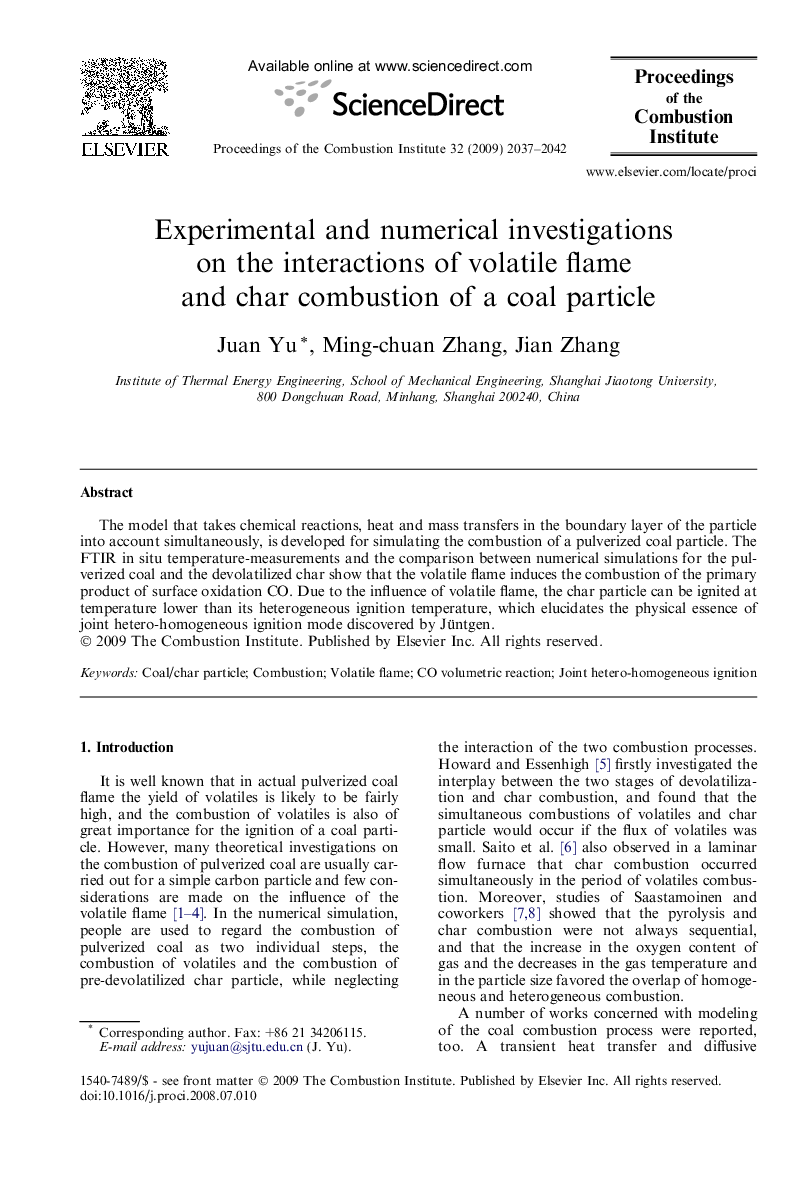| Article ID | Journal | Published Year | Pages | File Type |
|---|---|---|---|---|
| 241056 | Proceedings of the Combustion Institute | 2009 | 6 Pages |
Abstract
The model that takes chemical reactions, heat and mass transfers in the boundary layer of the particle into account simultaneously, is developed for simulating the combustion of a pulverized coal particle. The FTIR in situ temperature-measurements and the comparison between numerical simulations for the pulverized coal and the devolatilized char show that the volatile flame induces the combustion of the primary product of surface oxidation CO. Due to the influence of volatile flame, the char particle can be ignited at temperature lower than its heterogeneous ignition temperature, which elucidates the physical essence of joint hetero-homogeneous ignition mode discovered by Jüntgen.
Keywords
Related Topics
Physical Sciences and Engineering
Chemical Engineering
Chemical Engineering (General)
Authors
Juan Yu, Ming-chuan Zhang, Jian Zhang,
